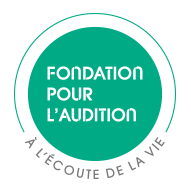MARTIN Pascal
2020 Research grant
Project status: active
Determination of the mechanical and physical parameters controlling the opening of ion channels in the hair bundle.
At the Physico-Chimie Curie Lab in Paris, Pascal Martin and his team are working to decipher the fundamental mechanisms of the very first stage of hearing: the transformation of a sound vibration into an electric current. Using an interdisciplinary approach, they are studying the "antenna" of sensory cells, a complex structure that can lead to hearing loss when impaired.
Pascal Martin is conducting research at the heart of the auditory system to understand the sophisticated machinery in each of the hair cells – the sensory cells of the cochlea* – that transforms the mechanical vibrations induced by sound into nerve signals transmitted to the brain, where they are interpreted. “The hair cell is like a microphone,” says the researcher. “It’s equipped with a mechanical antenna, known as a hair bundle because it is made up of ‘hairs’ anchored to the top of the cell. Sound waves make this hair bundle vibrate, setting off a chain of mechanical and biochemical reactions.” He summarizes, “Channels open on the surface of the hair cell and let in ions, creating an electric current. This current induces the production of chemical substances by the cell. These are captured by the nerve cells connected to each hair cell, giving the starting signal for the electrical nerve impulse: the sound signal has been converted into an electrical signal that spreads to the brain!”“Fondation Pour l'Audition’s recognition of the very fundamental work we are carrying out sends a strong signal, linking us to the hearing science community. We’re working upstream to contribute to the knowledge base that will enable future clinical developments.”
A complex architecture for hearing
With his team, Pascal Martin is studying how the hair bundle works. He wants to understand the parameters that condition its mechanical properties and sensitivity to sound vibrations. Carried out at the intersection of physics, biology and chemistry, his work also involves computer modeling. “We’re studying, for example, an isolated hair cell measuring a few thousandths of a millimeter: we mimic the effect of sounds by directly stimulating the hair bundle with microfibers made in the laboratory, or a liquid microjet. Then we observe its behavior.” The team is also interested in the very specific morphology of the hair bundle, which varies with the position of the hair cell in the cochlea. This phenomenon enables different sound frequencies to be detected. “We’re trying to understand how the arrangement of the hair cells and their morphological changes impact cell response.” And the researcher concludes, “As a trained physics engineer, I’m increasingly fascinated by the extreme refinement of hair bundle architecture!” These fundamental advances will enable a better understanding of the causes of genetic or acquired hearing loss, as well as innovative new therapeutic approaches.
Doctor Pascal Martin
CNRS Research Director
Leader of the "Active Mechano-Sensitivity by Hair Cells in the Inner Ear" team at the Physico-Chimie Curie Lab, Institut Curie, Paris
* Cochlea: hearing organ located in the inner ear. Shaped like a snail shell, its characteristic architecture houses hair cells, the auditory sensory cells.
2014 Open request
Project status: closed
Study of the sensitivity of hair cells in the inner ear.
Hearing in humans depends on the transformation of sound vibrations into electric signals, and this process takes place in cells situated in the cochlea, the sensory organ of the inner ear.
These cells are covered in tiny hairs and are called hair cells. They are essential and are found in tufts. Pascal Martin, a researcher at the Laboratoire Physico-Chimie Curie of the Institut Curie in Paris is studying the sensitivity of hair cell tufts in these cells under normal and pathological conditions.
Doctor Pascal Martin
Supervisor of Mélanie Tobin's doctoral thesis
Institut Curie, Paris, France
Related scientific publication(s):
- Mélanie Tobin, Atitheb Chaiyasitdhi, Vincent Michel, Nicolas Michalski , Pascal Martin.Elife. Stiffness and tension gradients of the hair cell's tip-link complex in the mammalian cochlea. 2019 Apr 1;8:e43473. doi: 10.7554/eLife.43473.
- R G Alonso, M Tobin, P Martin, A J Hudspeth. Fast recovery of disrupted tip links induced by mechanical displacement of hair bundles. Proc Natl Acad Sci U S A. 2020 Dec 1;117(48):30722-30727. doi:10.1073/pnas.2016858117. Epub 2020 Nov 16.
